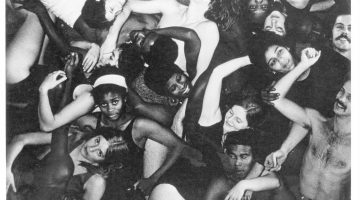By John Held, Jr.
My research on Gutai, the post-war Japanese avant-garde art movement, lead me to Emily Sano, the former Director of the Asian Art Museum (1993-2008) and current Japanese Art consultant to Larry Ellison, who I had previously known at the Dallas Museum of Art, where she was the Deputy Director of Collections and Exhibitions from 1989 to 1993 (and I was an Art Librarian at the Dallas Public Library). Emily suggested I talk to local artist Mary Ijichi, who she thought could assist me with my research.
I made an appointment to visit Ms. Ijichi at her home and studio atop Twin Peaks and got a lot more than I bargained for. Gutai aside, not only did I get to see her past and current production and discuss her working methodology, but I was treated to a family history stunning in its cross-cultural heritage.
Ms. Ijichi’s father was the great-nephew of Kanaye Nagasawa, who with fourteen other Japanese boys were sent to England to study various subjects and observe Western culture. Nagasawa’s specialty was ship building. While there, he met Thomas Lake Harris (1823-1906), an “American mystic, spiritualistic prophet and poet,” who established an Upstate New York commune in 1861, moving it to Santa Rosa and naming it Fountaingrove in 1875. Kanaye Nagasawa (1852-1934) became Harris’s manager at the 2,000 acre estate, establishing a winery and succeeding him after his death.
Ms. Ijichi’s father inherited the winery, but was forced to relinquish control of Fountaingrove through the unlawful curtailment of his rights during a troubling era for Japanese-American citizens. Unable to pass the property down to his children, he instilled a love of art in them, passed down from the family’s samurai heritage. Mary fondly remembers joining her father at art classes at the Richmond Art Center as a child. Recently passed away, he leaves behind his own artistic legacy in the form of jewelry and hewed wood furniture rivaling the creations of George Nakashima and J. B. Blunk.
Besides his own artwork, Mary’s father passed down the legacy of Kanaye Nagasawa, including several English photographic albums from the mid 1800’s, and drawings and watercolors by London trained artist Alice Parting, who relocated to Fountaingrove. These are invaluable relics forming an important local history, and Ms. Ijichi hopes that they will one day be made public in an appropriate institution.
Her own works have been show locally including Takada and Andrea Schwartz Galleries and the Triton Museum of Art in Santa Clara. In 2007, she showed at the Yale University Gallery, which acquired the work. Another work was admired by Sol LeWitt, who exchanged a gouache on paper to obtain it.
In addition to the LeWitt, Ms. Ijichi’s collection also includes a print by Yayoi Kusama, whose work she paid homage to at the George Billis Gallery in 2011. Her recent work has taken on the all over patterning of Kusama’s dots, applied by original methods using small aluminum tubes, dipped into acrylic paint and impressed on mylar leaving circular marks, which can be enlarged or reduced in circumference by using different size tubing.
Much of her current work reflects an interest in painstaking non-traditional paint application, for instance her use of a syringe-like extruder to spin layers of acrylic paint, and a hole-punch creating stacked layers of circular acrylic paint, which are then attached to mylar.
The works careful patterning, whether applied by hole-punch, extruder or metal tubing, remind one of Bruce Conner’s ink drawings from the seventies, line after line of repetitious activity, created to clear the mind of the applicator.
Ms. Ijichi writes that, “Creating art brings peace and balance to my world. While working, the meditative aspects of the process ascend and immersion in a repetitive methodology envelops me in tranquility. Time and place seem to disappear. It is my hope that viewers absorb a sense of calm while in the presence of my work.”
In person, the artist seemed grateful for the praise I heaped upon her, which isn’t always the case with more blasé artists. The sense of calm in the work was reflected in the artist herself; her humble working methodology mirrored the modesty of the person.
It was a totally enjoyable visit, which I felt compelled to share with others. Her inventive methods of paint application and the simplicity yet sureness of her patterning made a deep impression on me, the work revealing the temperament behind the creator. I came away with the feeling that art was, indeed, a healing art – for both the viewer and artist.







